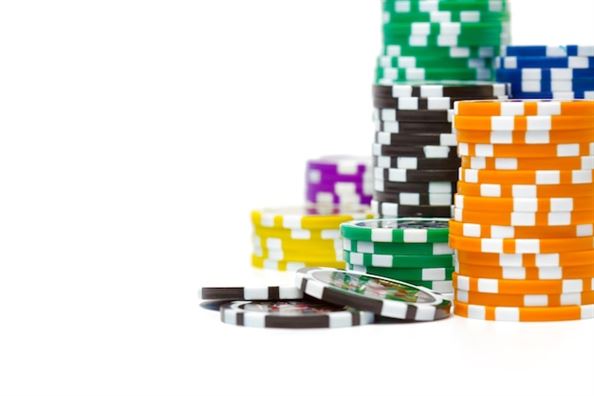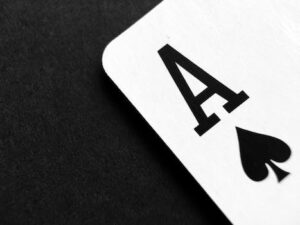Poker is a popular card game that combines skill, strategy, and probability. It is not only a game of luck but also a game of mathematics. Understanding the concept of Expected Value (EV) is crucial for poker players aiming to make profitable decisions. EV helps players assess the potential value of their actions by considering the probability of different outcomes and the associated payoffs. By calculating the EV of various moves, players can make informed decisions that maximize their long-term profitability in the game. In this article, we will delve into the relationship between poker and mathematics, focusing on the importance of understanding Expected Value for achieving profit in poker.
The Role of Expected Value (EV) in Poker Strategy
Expected value, often abbreviated as EV, is a mathematical concept that helps players make decisions based on the potential profitability of a particular action. In poker, EV is used to determine whether a decision is likely to be profitable or not. By calculating the expected value of a particular move, players can make informed decisions that maximize their chances of winning in the long run.
To understand EV in poker, it is important to first understand the concept of probability. Probability is the likelihood of a particular event occurring. In poker, probability is used to calculate the chances of a certain card or combination of cards being dealt. By understanding the probabilities, players can make more accurate assessments of the potential value of their hand.
Once the probabilities are understood, players can then calculate the expected value of a particular action. EV is calculated by multiplying the potential gain or loss of a move by the probability of that outcome occurring. For example, if a player has a 50% chance of winning $100 and a 50% chance of losing $50, the expected value of that move would be ($100 * 0.5) + (-$50 * 0.5) = $25.
By calculating the expected value of different actions, players can compare the potential profitability of each move and make decisions that maximize their long-term winnings. For example, if a player has a choice between two actions, one with a higher expected value and one with a lower expected value, they should choose the action with the higher expected value.
Understanding EV is crucial in poker because it helps players make decisions that are based on logic and mathematics rather than emotions or gut feelings. By relying on EV calculations, players can avoid making costly mistakes and increase their chances of winning in the long run.
However, it is important to note that EV is not a guarantee of immediate success. In the short term, luck can still play a significant role, and players can experience both winning and losing streaks. But over a large sample size, the decisions with higher expected value will lead to greater profits.
In addition to calculating the expected value of individual moves, players can also use EV to analyze their overall strategy. By calculating the expected value of different starting hands, players can determine which hands are most profitable to play and which ones should be folded. This analysis can help players refine their strategy and make more informed decisions at the poker table.
How to Calculate Expected Value (EV) in Poker
Expected value is a concept borrowed from probability theory and statistics. In poker, it represents the average amount of money a player can expect to win or lose on a particular decision over the long run. By calculating the expected value of a decision, players can determine whether it is a profitable move or not.
To calculate the expected value, players need to consider two factors: the probability of winning and the amount of money at stake. Let’s say you are playing a hand of Texas Hold’em and you have a pair of aces. You calculate that you have an 80% chance of winning the hand. The pot currently has $100 in it, and your opponent bets $20. To calculate the expected value, you multiply the probability of winning (0.8) by the amount you stand to win ($120, which includes the pot and your opponent’s bet) and subtract the probability of losing (0.2) multiplied by the amount you stand to lose ($20). In this case, the expected value of calling the bet is $88 ($120 * 0.8 – $20 * 0.2).
Calculating expected value can be a complex process, especially in situations where there are multiple possible outcomes. However, with practice and experience, players can develop a good understanding of how to calculate expected value in different scenarios.
It’s important to note that expected value is not a guarantee of winning or losing a particular hand. It is simply a tool that helps players make informed decisions based on the long-term profitability of a move. In the short term, luck can still play a significant role, and players can experience both winning and losing streaks.
Understanding expected value is crucial for poker players who want to be consistently profitable. By making decisions with positive expected value, players can maximize their long-term profits and minimize their losses. It allows players to make rational decisions based on the probabilities and potential outcomes of a hand, rather than relying solely on intuition or gut feelings.
In addition to calculating expected value, players also need to consider other factors such as pot odds and implied odds. Pot odds refer to the ratio of the current size of the pot to the cost of a contemplated call. Implied odds, on the other hand, take into account the potential future bets that can be won if a particular hand improves.
By combining these different concepts, players can make more accurate and profitable decisions at the poker table. It’s important to note that expected value calculations are not always straightforward, and they can vary depending on the specific situation and the skill level of the players involved.
Using Mathematics to Improve Your Poker Profits
To calculate expected value, you need to consider two factors: the probability of each possible outcome and the amount of money at stake. Let’s say you are playing a hand of Texas Hold’em and you have a flush draw on the turn. There are nine cards left in the deck that will complete your flush, and 47 cards that won’t. The probability of hitting your flush on the river is therefore 9/47.
Now, let’s consider the amount of money at stake. If you are facing a bet of $100 and the pot is currently $500, your potential profit is $500 if you hit your flush and win the hand. On the other hand, if you miss your flush, you will lose your $100 bet.
To calculate the expected value, you multiply the probability of each outcome by the amount of money at stake and sum them up. In this case, the expected value of calling the $100 bet is (9/47) * $500 – (38/47) * $100 = $95.74. This means that, on average, you can expect to make a profit of $95.74 by calling the bet.
Understanding expected value allows you to make more informed decisions at the poker table. If the expected value is positive, it means that the play is profitable in the long run. If it is negative, it means that the play is likely to result in a loss over time. By making plays with positive expected value and avoiding plays with negative expected value, you can increase your overall profitability.
However, it is important to note that expected value is not a guarantee of immediate success. In the short term, luck can still play a significant role, and you may experience variance or “swings” in your results. It is crucial to have a large enough sample size to accurately assess your expected value and make adjustments to your strategy accordingly.
In addition to calculating expected value, understanding probability and odds is also essential in poker. By knowing the odds of certain hands or outcomes, you can make more accurate decisions and avoid making costly mistakes. This knowledge can give you an edge over your opponents and increase your chances of winning in the long run.
Understanding the Importance of Expected Value (EV) in Poker Decision Making
To understand EV, let’s consider a simple example. Imagine you are playing a hand of Texas Hold’em and you are dealt two cards: Ace of spades and King of hearts. This is a strong starting hand, often referred to as “Big Slick.” Now, let’s say you are in a late position and the player before you raises the pot. You have to decide whether to call, raise, or fold.
To calculate the EV of each decision, you need to consider several factors. First, you need to assess the strength of your hand and the likelihood of winning the pot. Second, you need to consider the potential risks and rewards associated with each decision. Finally, you need to factor in the size of the pot and the amount of money you have already invested.
Let’s say the pot is currently $100, and the player before you raises it to $50. You estimate that you have a 70% chance of winning the hand if you call, a 90% chance if you raise, and a 20% chance if you fold. Additionally, you have already invested $10 in the pot.
To calculate the EV of calling, you multiply the probability of winning (70%) by the potential reward ($150, which includes the $100 pot and the $50 raise) and subtract the potential risk ($50). In this case, the EV of calling would be (0.7 * $150) – $50 = $105 – $50 = $55.
To calculate the EV of raising, you follow the same formula. The probability of winning is 90%, the potential reward is $200 ($100 pot + $50 raise + $50 call), and the potential risk is $100 (your raise). The EV of raising would be (0.9 * $200) – $100 = $180 – $100 = $80.
Finally, to calculate the EV of folding, you consider the probability of winning (20%) and the potential risk (the $10 you have already invested). The EV of folding would be (0.2 * $10) – $10 = $2 – $10 = -$8.
Based on these calculations, the most profitable decision would be to raise, as it has the highest EV of $80. Calling also has a positive EV of $55, while folding has a negative EV of -$8.
Understanding EV allows players to make more informed decisions and maximize their long-term profitability. By calculating the EV of different actions, players can determine the most profitable course of action in any given situation. However, it is important to note that EV is not a guarantee of immediate success. In the short term, luck can still play a significant role, but over time, making decisions with positive EV will lead to overall profitability.
Maximizing Your Poker Winnings through Expected Value (EV) Analysis
To understand EV, let’s consider a simple example. Imagine you are playing a hand of Texas Hold’em and you are dealt two cards, a pair of Aces. You decide to raise the pot before the flop. Now, let’s say your opponent calls your raise and the flop comes down with three low cards. At this point, you have a strong hand, but it is not guaranteed to be the best hand. To determine the EV of your decision to bet, you need to consider the probability of winning the hand and the potential payout.
To calculate the EV, you need to multiply the probability of winning by the potential payout and subtract the probability of losing multiplied by the potential loss. In this case, let’s say there is $100 in the pot and you decide to bet $50. If you win the hand, you will win the entire pot, which is $100. If you lose, you will lose your $50 bet. Let’s assume that the probability of winning the hand is 70% and the probability of losing is 30%.
To calculate the EV, you multiply the probability of winning (0.70) by the potential payout ($100) and subtract the probability of losing (0.30) multiplied by the potential loss ($50). So, the EV of your decision to bet is (0.70 * $100) – (0.30 * $50) = $70 – $15 = $55. This means that, on average, you can expect to win $55 every time you make this bet.
By calculating the EV of different actions, players can make informed decisions that will maximize their winnings in the long run. If the EV of a particular action is positive, it means that the action is profitable in the long run. If the EV is negative, it means that the action is not profitable and should be avoided.
Understanding EV is crucial for poker players who want to maximize their winnings. By making decisions based on EV analysis, players can avoid making costly mistakes and increase their profitability. It allows players to think beyond the immediate outcome of a hand and focus on the long-term results.
In conclusion, Expected Value (EV) is a mathematical concept that helps poker players make decisions that will maximize their winnings in the long run. By calculating the EV of different actions, players can make informed decisions that will lead to greater profitability. Understanding EV is crucial for poker players who want to maximize their winnings and avoid costly mistakes. So, the next time you sit down at the poker table, remember to consider the EV of your decisions and play strategically to increase your chances of success.

















